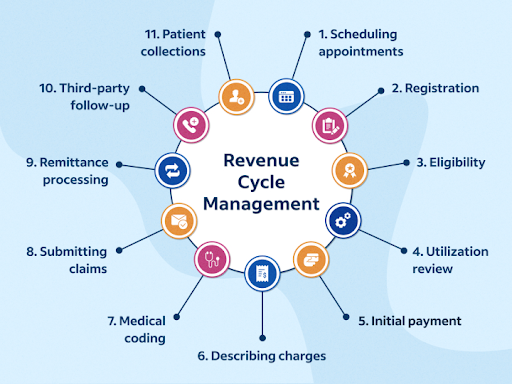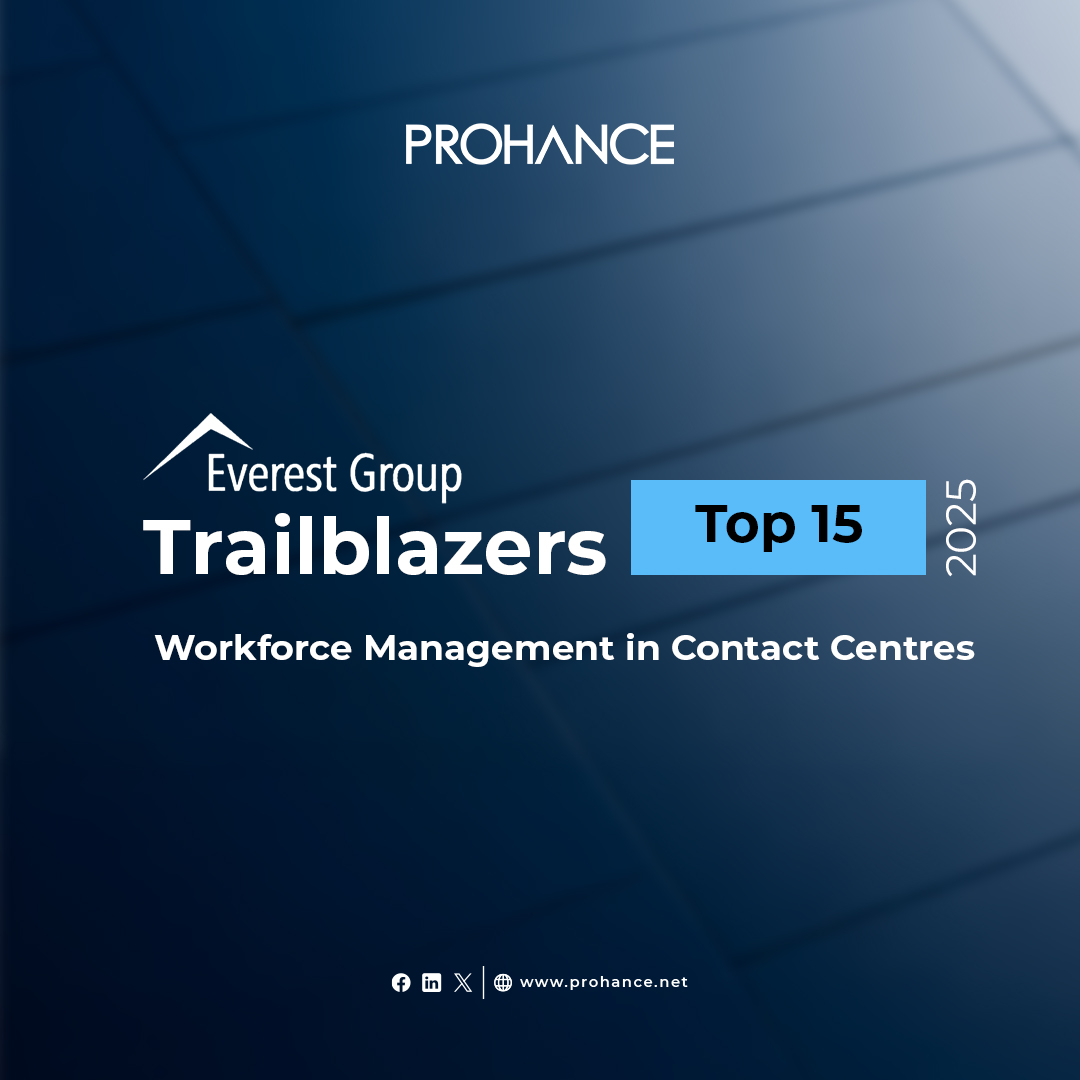How to Effectively Track and Measure Revenue Cycle Management Performance?
Table of contents
- What is Revenue Cycle Management?
- Key Challenges in Revenue Cycle Management
- Revenue Cycle Management Best Practices
- How to Improve Revenue Cycle Management Performance?
- Key Performance Indicators in Revenue Cycle Management
- Revenue Cycle Management Metrics to Prioritize
- Conclusion
- Revenue Cycle Management Performance Monitoring – FAQ
Monitoring the performance of the revenue cycle is crucial for organizations that are eager to remain financially stable, improve their operations, and provide excellent services to their clients.
Revenue Cycle Management (RCM) is meant to capture and account for every dollar earned while stating all possible waste. This guide delves deeper into RCM, revenue cycle key performance indicators, the best practices and key metrics to assess its effectiveness.
What is Revenue Cycle Management?
Revenue Cycle Management (RCM) represents the entire financial process within a healthcare system that includes claim processing and billing, as well as revenue collection.
It begins from the moment a patient makes an appointment and ends when all requisite payments have been made by the patient for treatment given by the service provider.
RCM encompasses five key steps:
- Patient appointment and registration.
- Verification of the patient’s insurance.
- Submission of the payment claim and tracking.
- Recording the receipt of payments and ensuring the balance is paid.
- Management of claims that have been denied and resolving them.

All these practices when executed well under RCM result in quicker payments, decreased rate of rejections of submissions made, financial security of the organization and at the same time improving the patients’ experience.
Key Challenges in Revenue Cycle Management
With so many factors putting a burden on the revenue cycle, there is no easy way to approach making the revenue cycle a success for healthcare organizations. The latest poll by the Medical Group Management Association (MGMA) has brought light to these issues:
- Claim payment was revealed to be the most revenue cycle issue by nearly half (48%) of the healthcare executives.
- An overall of 23% cited “other” negative issues with the revenue cycle, the most important three being denials, prior authorization, and staffing issues.
- Close to 18% reported having issues capturing and/or sending claims.
- An additional 11% mentioned difficulties associated with the process of the claims.
These obstacles can effectively impede revenue cycle operations, making it imperative to adopt focused measures. Moreover, a poll by MGMA found that 40% of medical practices failed to meet their revenue goals for 2021. Failure to hire staff and slower reimbursement periods were the most important reasons for this number.
Revenue Cycle Management Best Practices

In order to have a well-functioning revenue cycle, entities need to adopt certain best practices that focus on enhancing each level. Below are a five best practices for the efficient management of the revenue cycle:
- Improve the Experience of Onboarding Patients
- Make Use of Automation Processes
- Proactive Denial Management
- Engage in Staff Training
- Utilize Analytics
Improve the Experience of Onboarding Patients
Correct patient details when scheduling and registering are the bedrock of RCM. Confirming insurance coverages as well as collecting key information at the start avoids flowing mistakes where claims become denied.
Make Use of Automation Processes
Automation tools can assist in dealing with repetitive processes such as submission of claims, coding as well as posting of payments. The introduction of applications for electronic health record (EHR) maintenance and practice management minimizes manual work and maximizes effective output.
Proactive Denial Management
The monitoring of claim denials and denial management tends to be a recurrent cycle that, if addressed instantly, will avert further occurrences. Knowing the frequent reasons for denial allows the providers to improve their procedures and increase the proportions of claim acceptance.
Engage in Staff Training
Engaging in regular training of the staff members in charge of billing, coding as well as front desk activities will help to increase compliance and limit chances of revenue losses.
Utilize Analytics
Actionable strategies for the performance of the revenue cycle can be developed using data analytics. Analytics can assist in identifying patterns, areas of weaknesses or defects, and other issues that need urgent attention.
How to Improve Revenue Cycle Management Performance?
Effective management of the revenue cycle begins with planning and is sustained by a systematic approach that utilizes data to strengthen processes. Here are five practical recommendations:
- Conduct Regular Audits
- Enhance Communication
- Monitor Payer Trends
- Monitor Key Performance Indicators (KPIs)
- Invest in Tech Solutions
Conduct Regular Audits
Through auditing the revenue cycle, one can uncover areas that are stuck, processes that are no longer in demand, and ones that are being out of compliance. Regular check-ins keep the system in place towards the objectives of the organization.
Enhance Communication
Making efforts to improve communication regarding the revenue cycle processes across departments reduces chances of errors and delays in claims processing. There needs to be proper coordination between the administration and clinical sides as this is very important.
Monitor Payer Trends
Familiarizing oneself with the requirements of a specific payer and trends regarding claims submission ensures that the processes of the organizations are in sync for faster validation of claims.
Monitor Key Performance Indicators (KPIs)
Monitoring KPIs allows you to keep an eye on the most influential factors dictating your revenue cycle. Always focus on metrics like the denial rate, collections days, and clean claim percentages so as to take appropriate actions.
Invest in Tech Solutions
Technology solutions such as revenue cycle management (RCM) software or access to patient portals and electronic health record (EHR) systems can significantly enhance precision and overall productivity. These sets of solutions improve transparency and enable real time data exchange.
Key Performance Indicators in Revenue Cycle Management
Selecting correct performance metrics indisputably correlates with how well your institution’s revenue cycle is performing. Here are the most important ones that must be followed and understood precisely:
- Days in Accounts Receivable (A/R)
- Denial Rate
- Clean Claim Rate
- Net Collection Rate
- Patient Payment Collections
Days in Accounts Receivable (A/R)
Days in A/R reflect the average amount of days taken to receive payments. Lower values show that you are collecting outstanding amounts fairly efficiently, while higher days could mean opportunities being missed. MGMA cites two of the most common reasons – not enough staff and slow payer reimbursements – as major reasons why days in A/R are on the rise.
Denial Rate
This KPI focuses on measuring the proportion of payer claims that are not paid out. A low justification denial rate means that funds are flowing in accordance with expectations and revenue generation is not being hindered by unnecessary interruptions.
Clean Claim Rate
The clean claim rate is an integral metric, which ranks the percentage of claims that are made that do not contain any inaccuracies. When the clean claim percentage ratio increases, there will be less waiting time for payments and less billing reworking.
Net Collection Rate
This metric determines the degree of efficiency of the revenue collection in relation to the expected total. It brings to the fore revenue that has potential but remains unrealized.
Patient Payment Collections
As patient responsibility for healthcare costs increases, monitoring patient payment collections becomes crucial. Tracking this ensures revenue isn’t left uncollected.
Revenue Cycle Management Metrics to Prioritize
Though KPIs represent a broad overview, more advanced metrics provide insights into specific aspects of a brand’s revenue cycle management. Such as:
- Claim Submission Timeliness: Defines the time from patient encounter to claim submission
- Denial Resolution Time: Measures the time taken to work out a denial for a claim
- Cost to Collect: This shows the total cost of collecting revenue.
These metrics ought to be regularly reported and benchmarked so that the leaders may devise and carry out targeted strategies for improvement.
Also Read: Everything You Should Know About Healthcare Revenue Cycle Management Analytics
Conclusion
Lastly, it is worth noting that the efficient management of the revenue cycle is vital for the financial health of healthcare organizations. By enhancing processes, deploying appropriate tools, and paying attention to key indicators of interest, organizations can operate effectively and minimize waste. However, as the MGMA polls point out, payment delays, workforce shortage issues, and payer inefficiencies, among others, continue to increase challenges in RCM. If tackled with the right tools, the right focus, and the right level of detail, it is reasonable to expect that the revenue cycle has the potential to drive growth for an organization.
Revenue Cycle Management Performance Monitoring – FAQ
Q1. In what way does the revenue cycle get affected by staffing problems?
Increased staff shortages may cause additional mistakes, slower submission of claims procedures, increased days in A/R, all of which are detrimental to cash flow and revenue objectives.
Q2. What functions does RCM technology perform?
Technology aids in activities like claim submissions, posting payments, analyzing data, improving accuracy and facilitating various points of the revenue cycle.
Q3. How relevant are KPIs in the case of revenue cycle management?
KPIs incorporate measurement in all verticals of the revenue cycle and their effectiveness, enabling organizations to discern gaps and measure progress.






